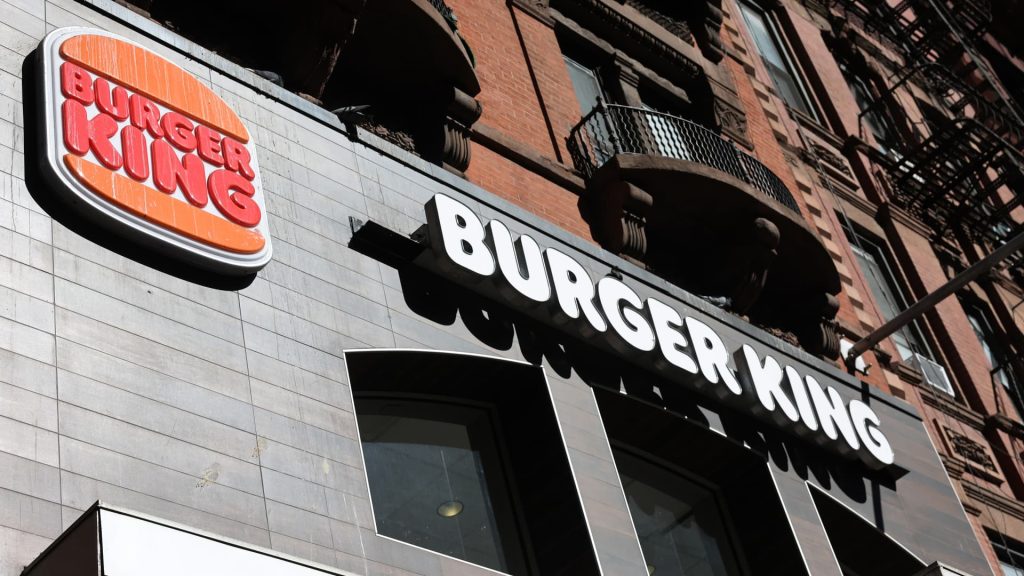Restaurant Brands International recently reported its quarterly earnings, revealing that revenue and earnings fell short of analysts’ expectations, predominantly due to declining same-store sales across its major brands, including Popeyes, Burger King, and Tim Hortons. Despite the disappointing figures, CEO Josh Kobza expressed optimism about an improving sales momentum and the company’s ability to navigate through the year. The report highlights broader challenges within the fast-food sector amid cautious consumer spending.
| Article Subheadings |
|---|
| 1) Overview of Financial Performance |
| 2) Understanding Same-Store Sales Trends |
| 3) Brand-Specific Insights |
| 4) International Market Performance |
| 5) Future Outlook and Strategic Plans |
Overview of Financial Performance
On Thursday, Restaurant Brands International announced its first-quarter earnings, revealing a net income attributable to shareholders of $159 million, or 49 cents per share. This figure is a decline from the $230 million, or 72 cents per share, reported a year earlier. The company’s adjusted earnings per share came in at 75 cents, missing the analysts’ expectations of 78 cents. Total revenue for the quarter stood at $2.11 billion, slightly below the anticipated $2.13 billion. This performance highlights the significant challenges the company faced during the quarter as same-store sales dipped across multiple brands.
Understanding Same-Store Sales Trends
Same-store sales play a critical role in evaluating a restaurant’s financial health, serving as a key indicator of consumer demand. Unfortunately, Restaurant Brands reported a 0.1% growth in overall same-store sales, although when adjusting for last year’s Leap Day, growth would have been approximately 1%. In contrast, the company’s three largest brands—Popeyes, Burger King, and Tim Hortons—failed to meet Wall Street’s expectations, demonstrating a challenging environment for fast-food chains as consumer spending remains cautious amidst economic uncertainties.
Brand-Specific Insights
Looking deeper into the performance of the company’s brands reveals varying results. Tim Hortons, which contributes over 40% of total revenue, reported a slight same-store sales decline of 0.1%, falling short of the expected growth of 1.4%. This contrasts sharply with the previous year’s impressive growth of 6.9%. CEO Kobza noted that the brand has shown signs of improvement in recent weeks, particularly after launching a new breakfast collaboration with actor Ryan Reynolds. Meanwhile, Burger King’s same-store sales fell by 1.3%, exceeding estimates of a 0.9% decline, while Popeyes experienced a staggering 4% drop—significantly worse than the expected decline of 1.8%.
International Market Performance
Despite the struggles faced domestically, Restaurant Brands experienced stronger demand in international markets. The company’s international segment reported a notable same-store sales growth of 2.6%. This contrast underscores the potential for expansion outside the saturated U.S. market, where competition is intensifying. The positive performance abroad could present a valuable opportunity for the company to diversify its revenue streams and mitigate risks associated with the North American market.
Future Outlook and Strategic Plans
Looking ahead, Restaurant Brands has reiterated its forecast for 2025, anticipating capital expenditures between $400 million and $450 million. The firm aims to implement tenant inducements and other strategic incentives to bolster sales growth. Additionally, the company remains committed to its long-term targets, projecting average same-store sales growth of around 3% along with about 8% organic adjusted operating income growth from 2024 to 2028. This strategic direction aims to instill confidence among stakeholders and promote operational improvements across all brands.
| No. | Key Points |
|---|---|
| 1 | Restaurant Brands International reports disappointing quarterly earnings, with net income down significantly from last year. |
| 2 | Same-store sales growth is minimal, reflecting broader challenges in the fast-food industry. |
| 3 | Tim Hortons and Popeyes reported sales declines, with only international markets showing positive growth. |
| 4 | CEO expresses optimism regarding sales momentum and future performance despite current setbacks. |
| 5 | Future strategic plans include significant capital investments and efforts to achieve target growth rates. |
Summary
The latest quarterly earnings from Restaurant Brands International reflect both challenges and opportunities within the fast-food sector. Despite missing analyst projections and experiencing declines across several major brands, the company showcases resilience through potential improvements and a focus on international markets. The path forward involves strategic investments aimed at long-term growth, crucial for maintaining competitive standing in an increasingly competitive industry.
Frequently Asked Questions
Question: What are same-store sales?
Same-store sales measure the revenue generated by a retailer or restaurant from locations that have been open for a year or more, offering insight into business performance relative to previous years.
Question: Who is the CEO of Restaurant Brands International?
The CEO of Restaurant Brands International is Josh Kobza, who has recently commented on the company’s future growth prospects.
Question: What strategic plans does Restaurant Brands have for the future?
Restaurant Brands plans to invest between $400 million and $450 million in capital expenditures, aiming to achieve long-term targets of 3% same-store sales growth and 8% organic adjusted operating income growth from 2024 to 2028.
